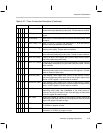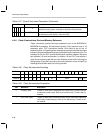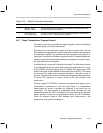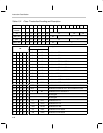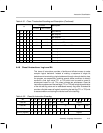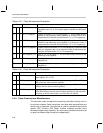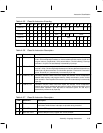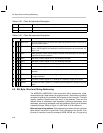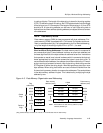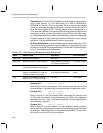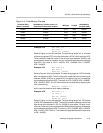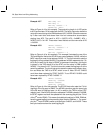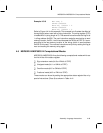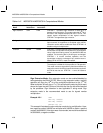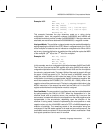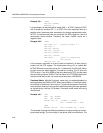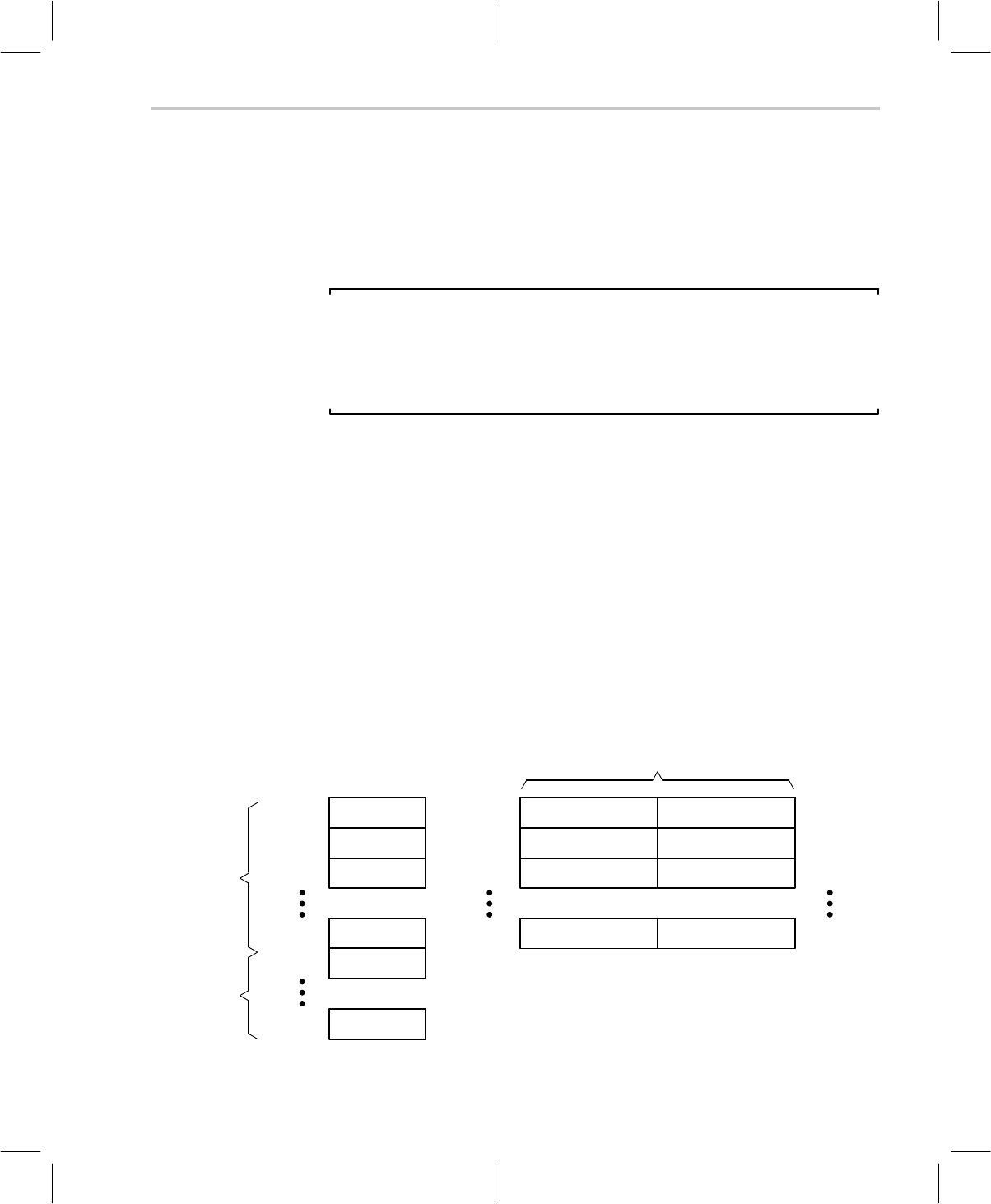
Bit, Byte, Word and String Addressing
4-45Assembly Language Instructions
is a string of bytes. The length of the byte string is stored in the string register
(STR). To define the length of a string, the STR register should hold the length
of the string minus 2. For example, if the length of a byte string is 10, then STR
should be 8. A byte string address can be even or odd. Byte string data is
fetched from the lower address (starting address) one byte at a time to consec-
utive addresses.
NOTE: Data Memory Access
Data memory access (RAM) is always accessed with byte addresses. Pro-
gram memory (ROM) is accessed with 17-bit words. Rx registers autoincre-
ment (or autodecrement) by 1 for byte addressing, by 2 for word addressing,
or by the length of the string in bytes if Rx++ (or Rx– –) is used.
Word and Word String Addresses: One data memory word is composed of
two consecutive bytes. A word address is always an even byte address and
the least significant bit of the byte address is assumed to be zero. Instructions
that operate on words have internal hardware which increments the byte ad-
dress appropriately to load the two consecutive bytes in one clock cycle. To
use an absolute word address, the address should be multiplied by 2. A word-
string is a string of consecutive words. Like a byte-string, word-strings use the
STR register to define the string length. Word-strings always start at an even
byte address. When string instructions are used, words are fetched from the
first word-string memory location to consecutive addresses. The word address
is the data memory address in bytes. This is obtained by multiplying the byte
address by two.
Figure 4–3. Data Memory Organization and Addressing
17th Bit
17th Bit
17th Bit
17th Bit
17th Bit
17th Bit
0000h
0001h
0002h
0040h
0041h
nnnn
Global
flags
Relative
flags
Flag
addresses
†
MS Byte
MS Byte
MS Byte
MS Byte
0000h
0002h
0004h
nnnn
LS Byte
LS Byte
LS Byte
LS Byte
Data memory
address (even)
0001h
0003h
0005h
nnnn+1
Data memory
address (odd)
1 Word
Note: Word address is data memory address (or byte
address) divided by 2.
†
Flag address always accesses the 17
th
bit of 17 bit wide data word in data memory.



